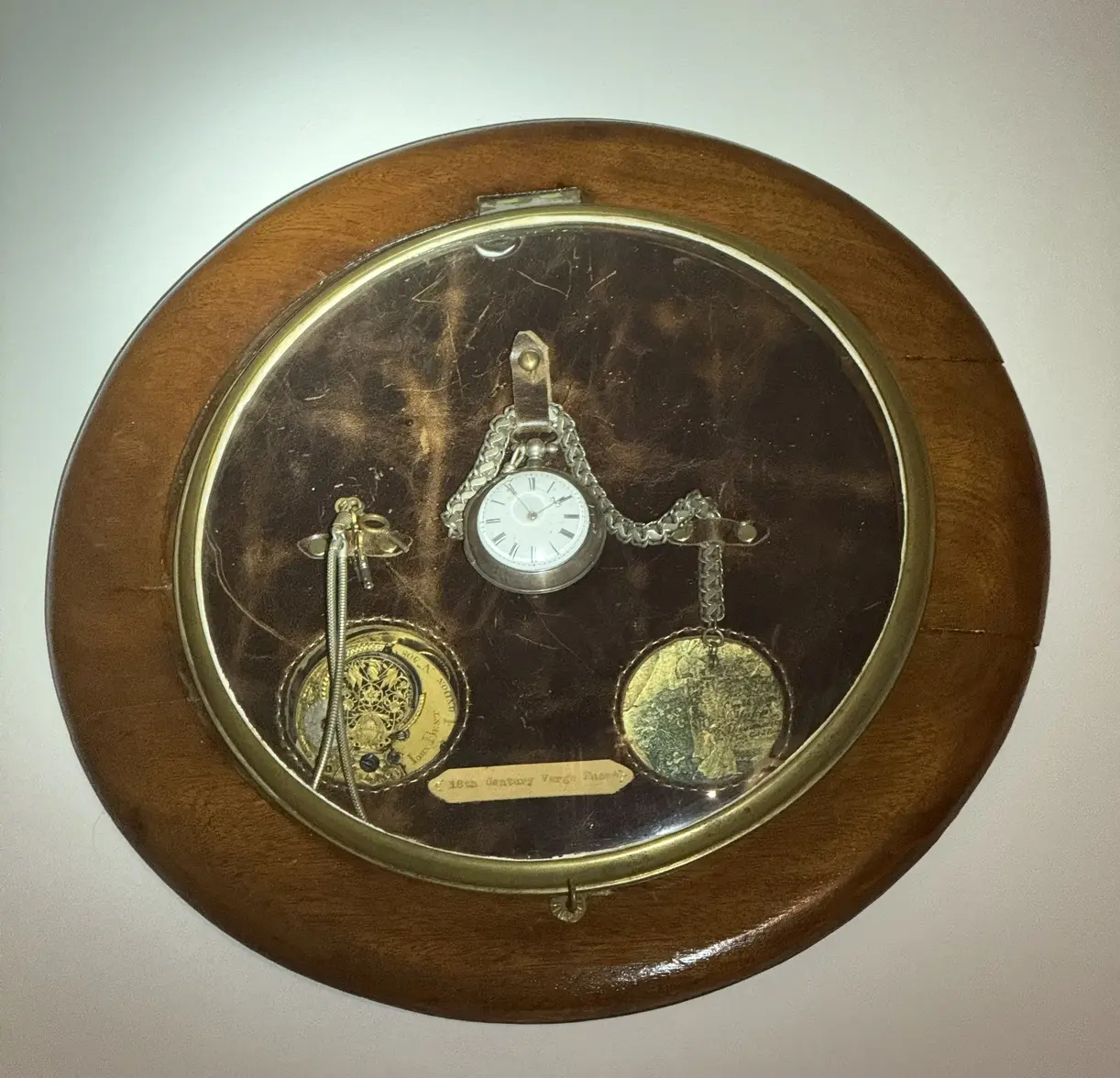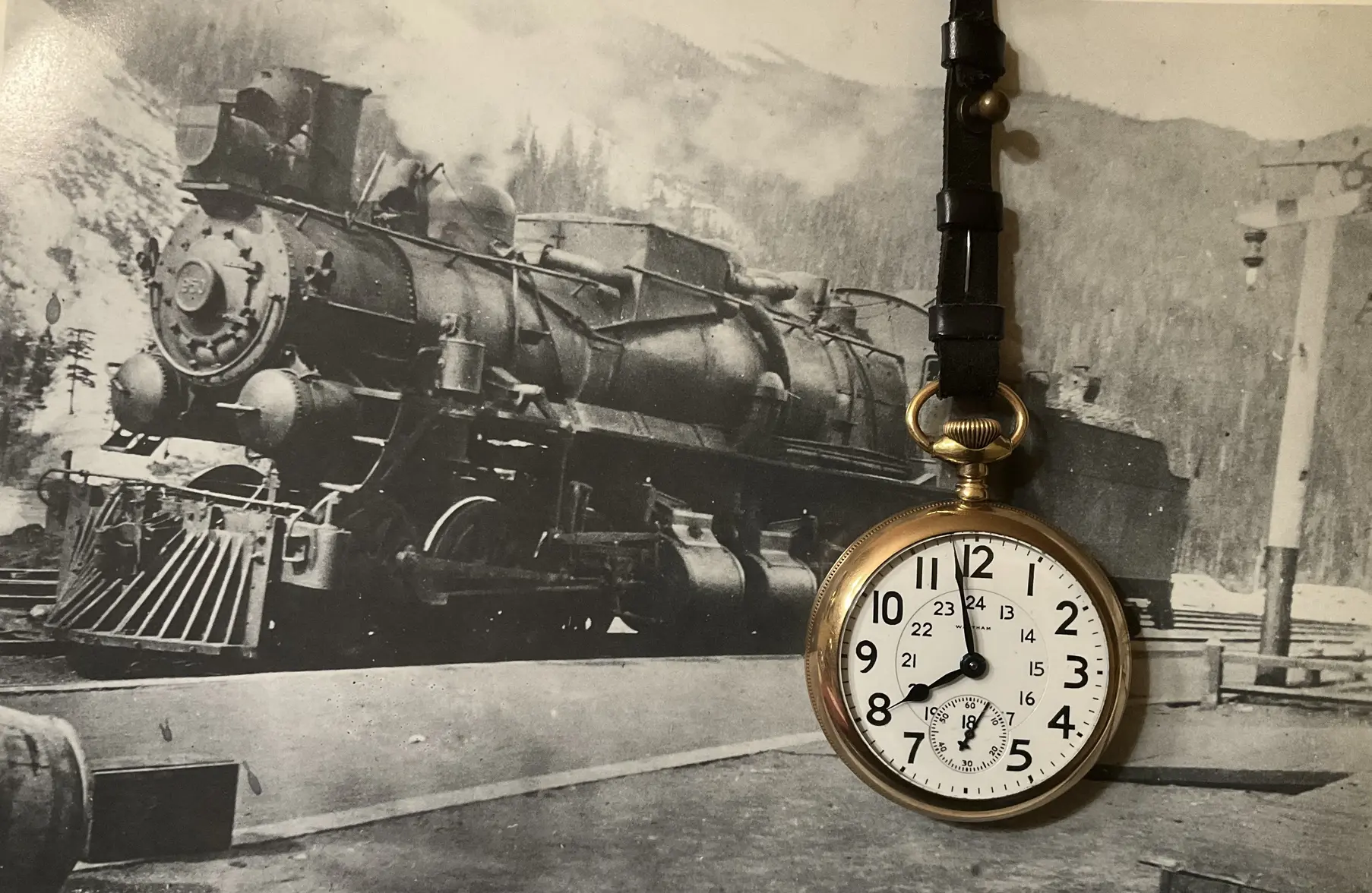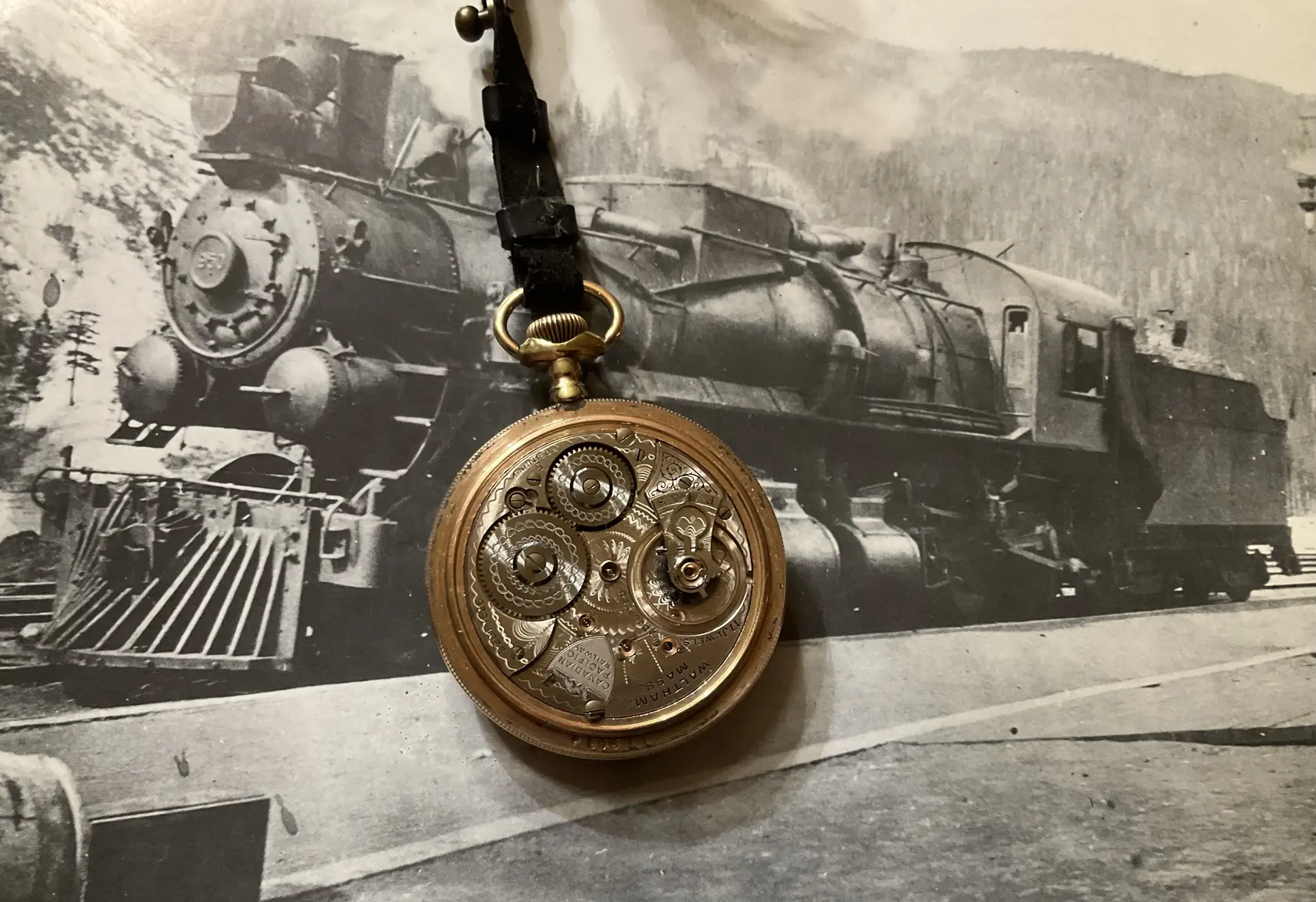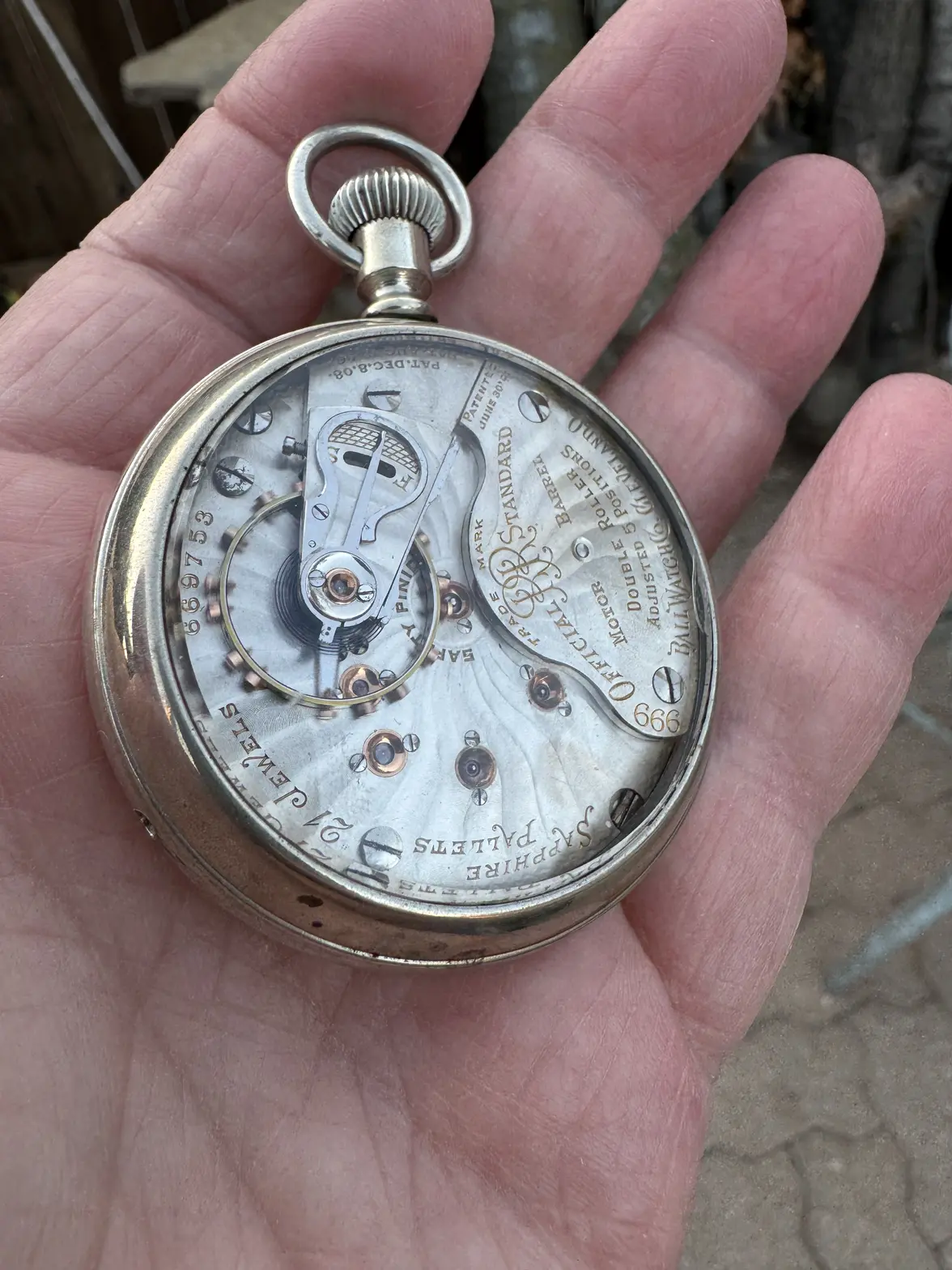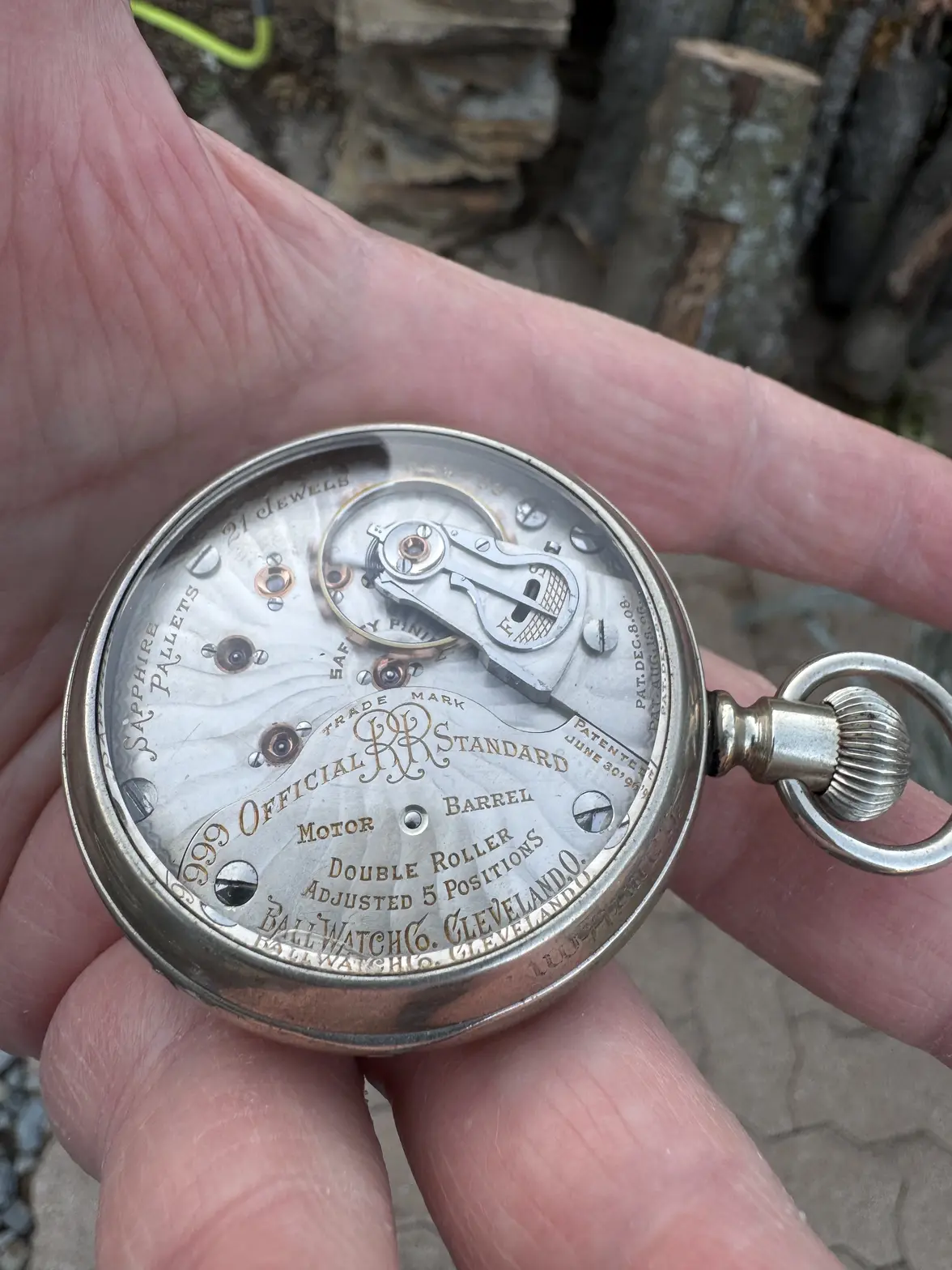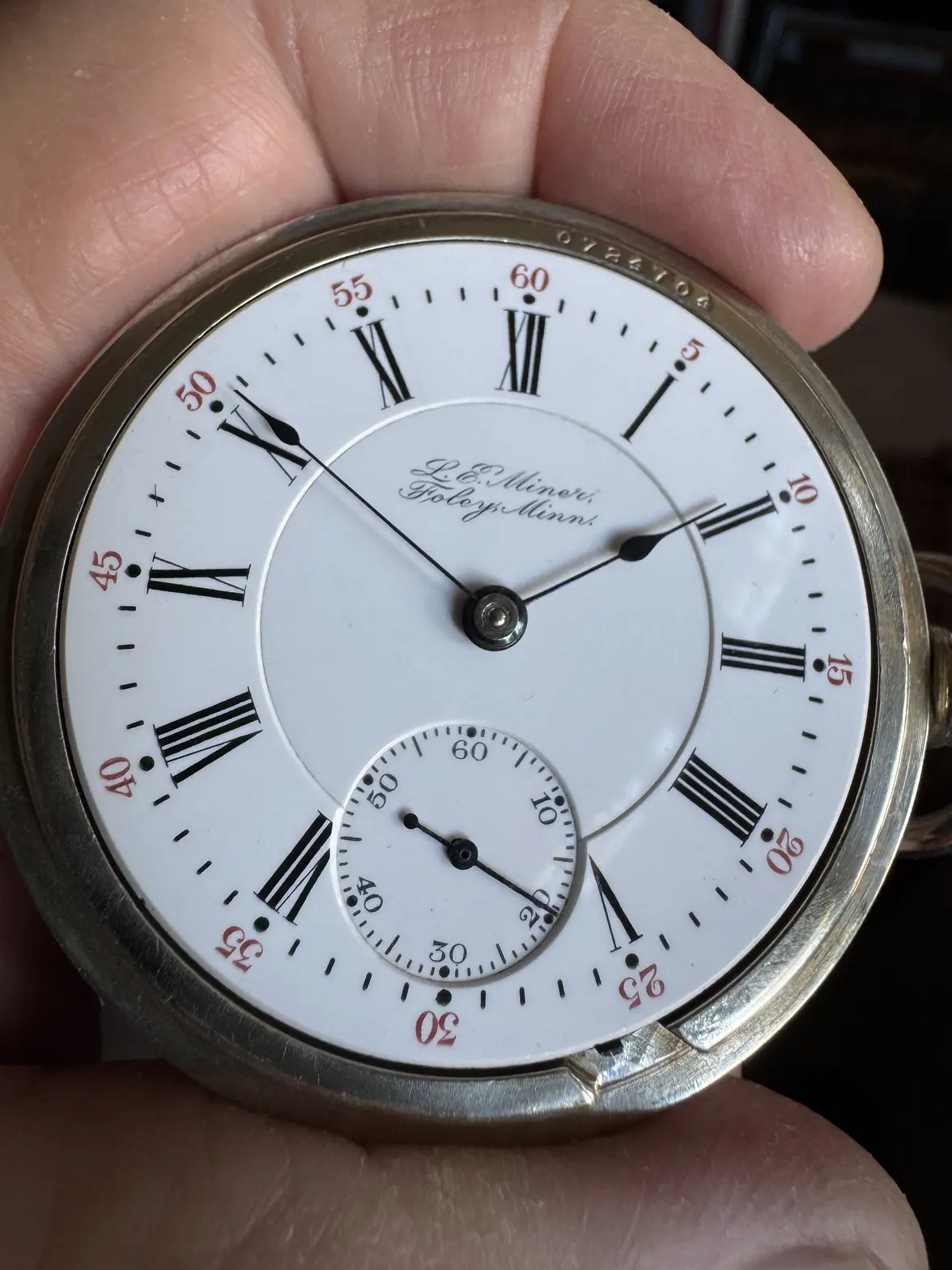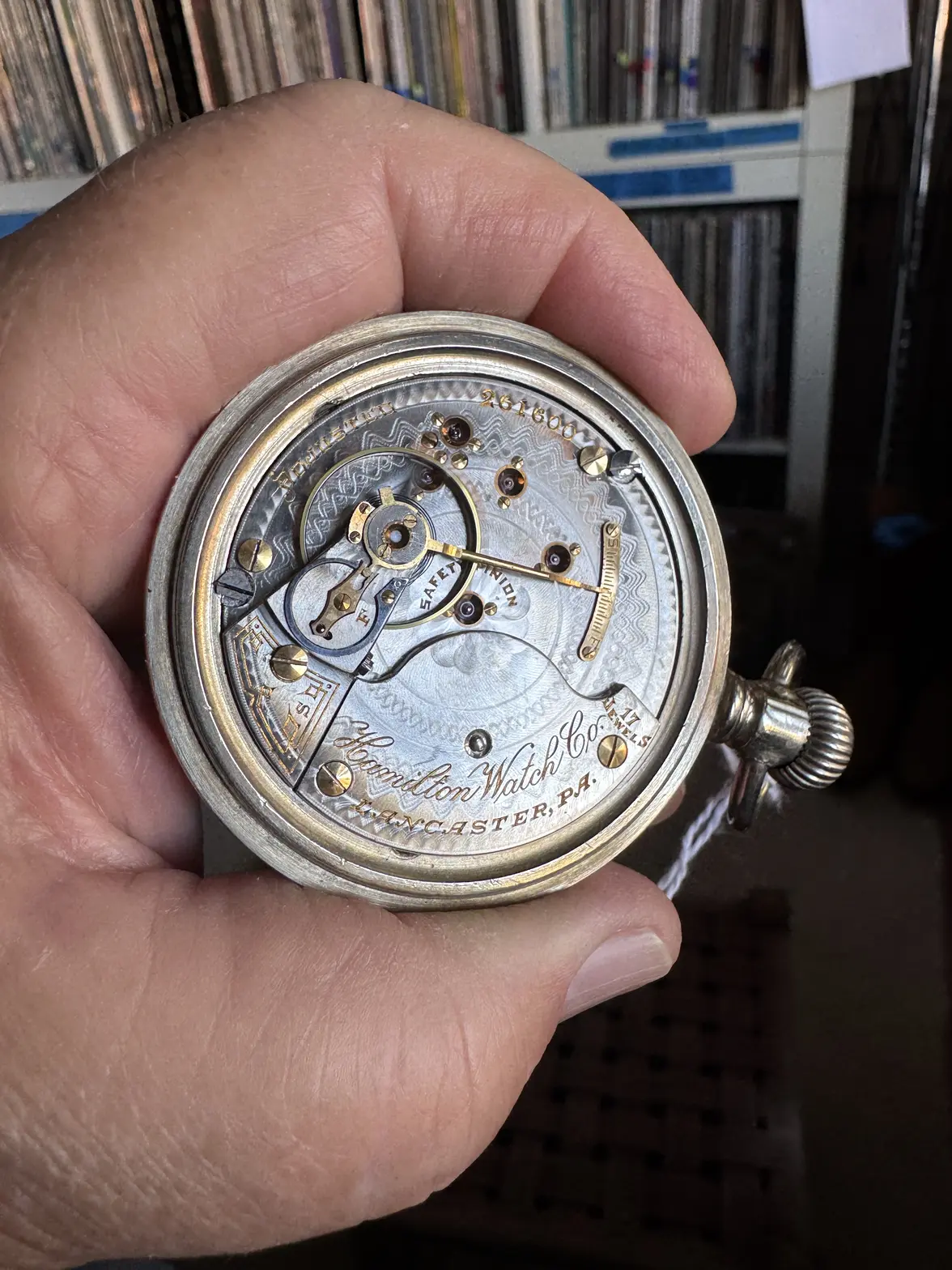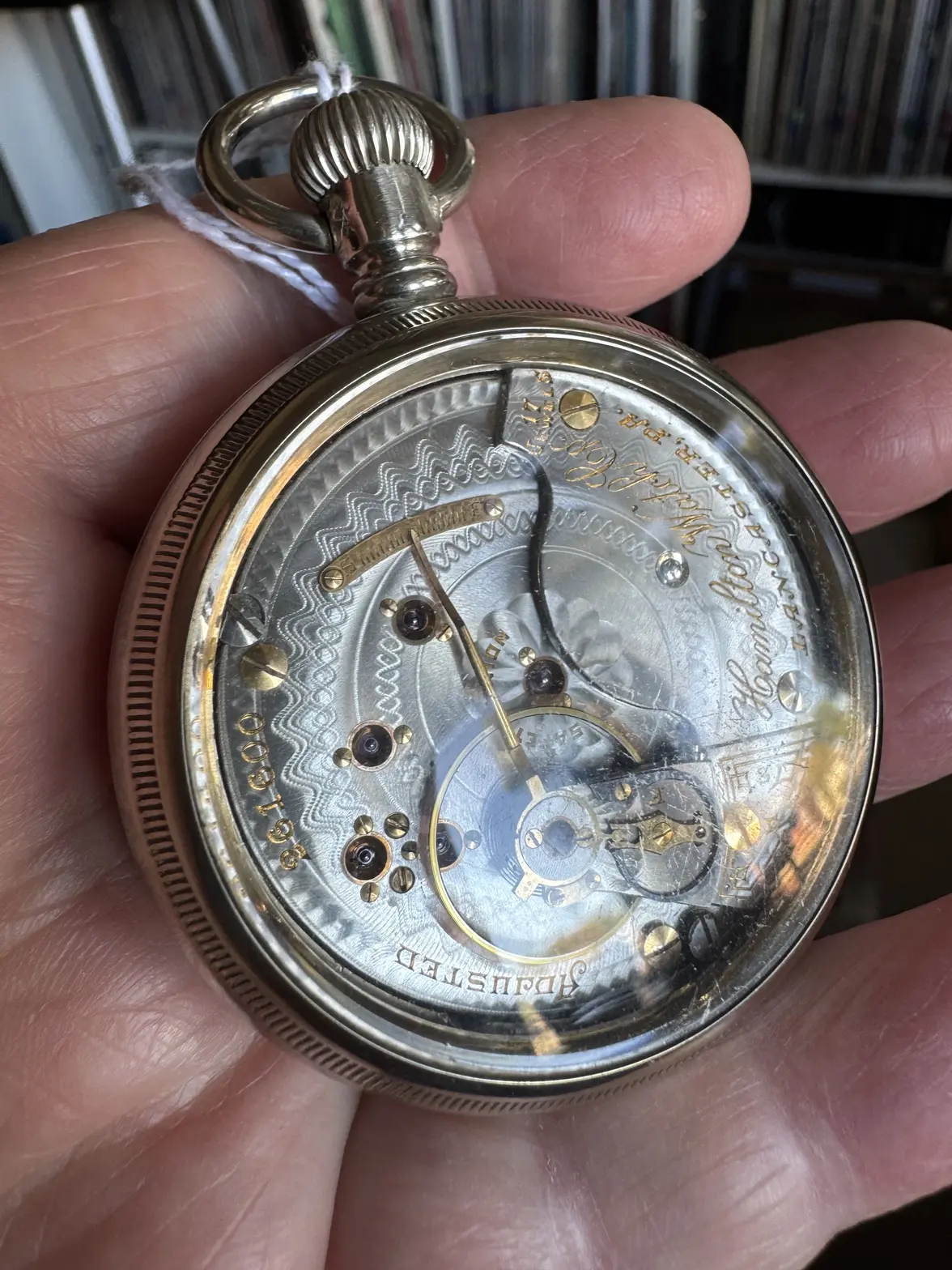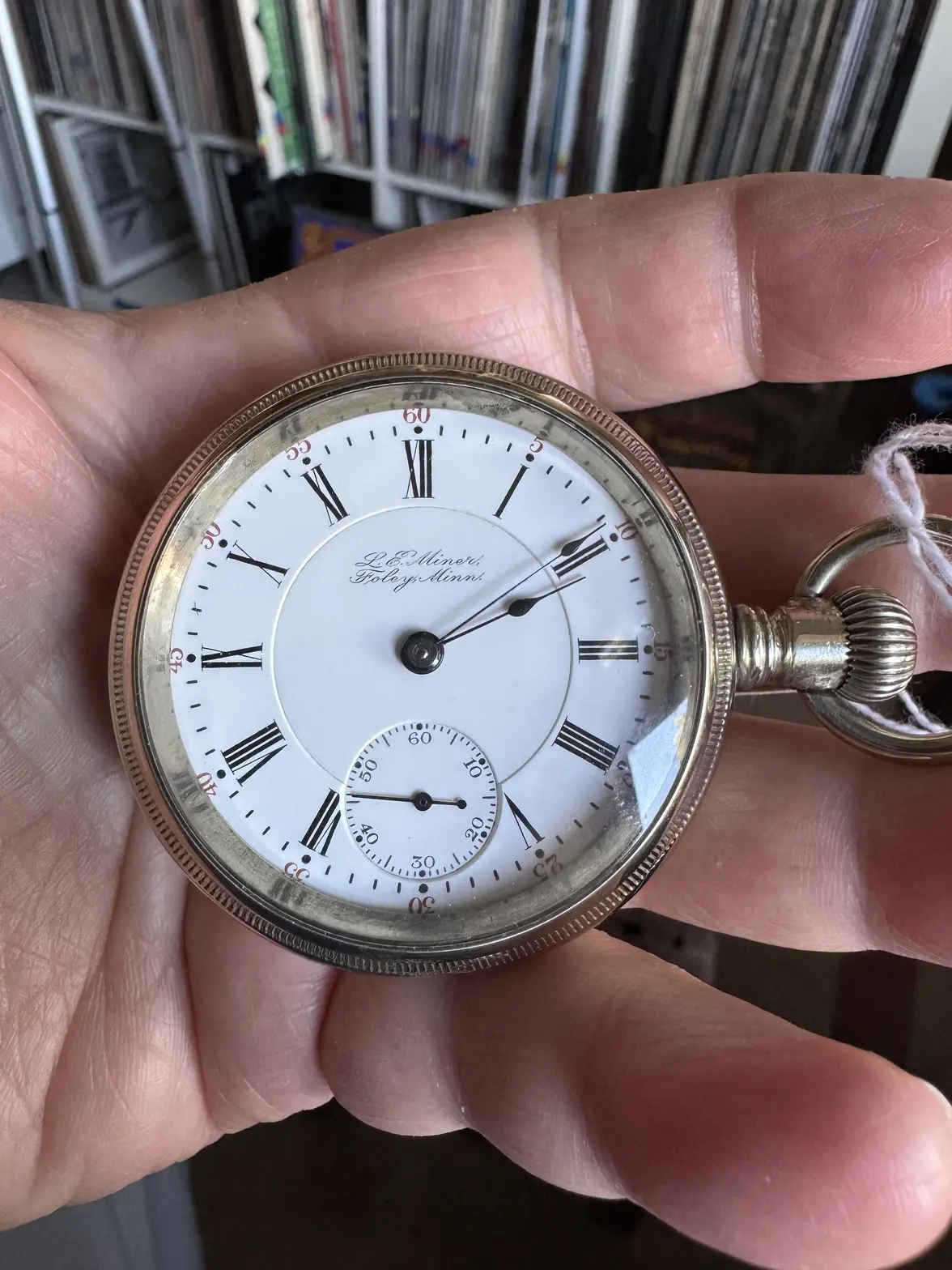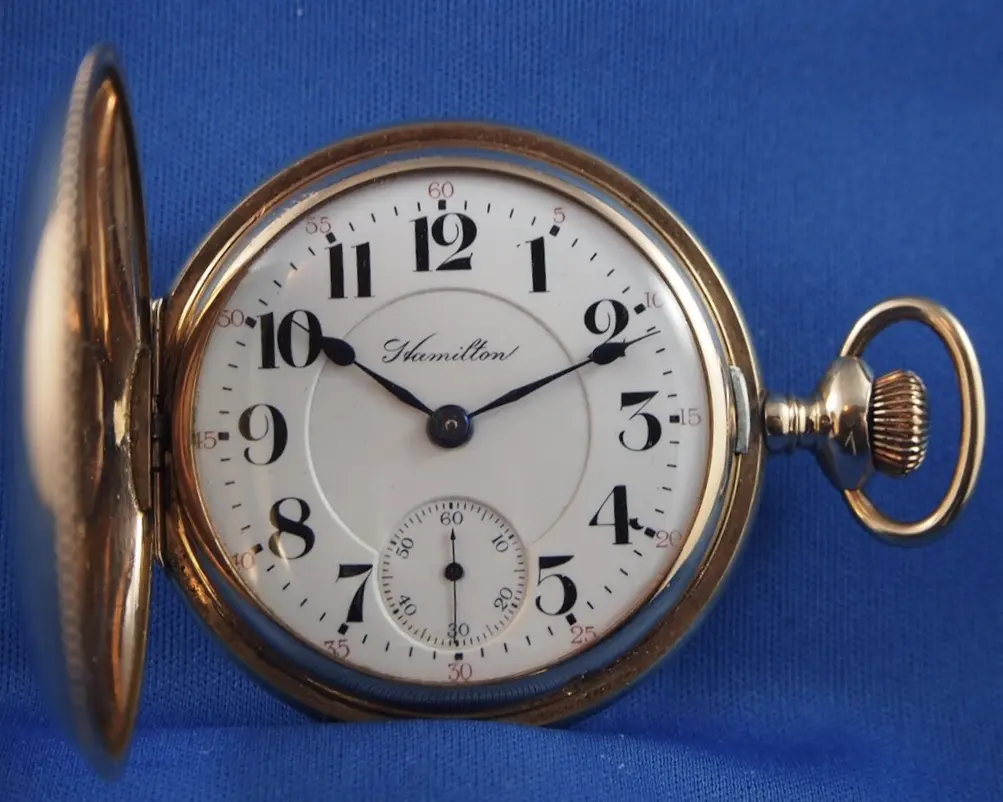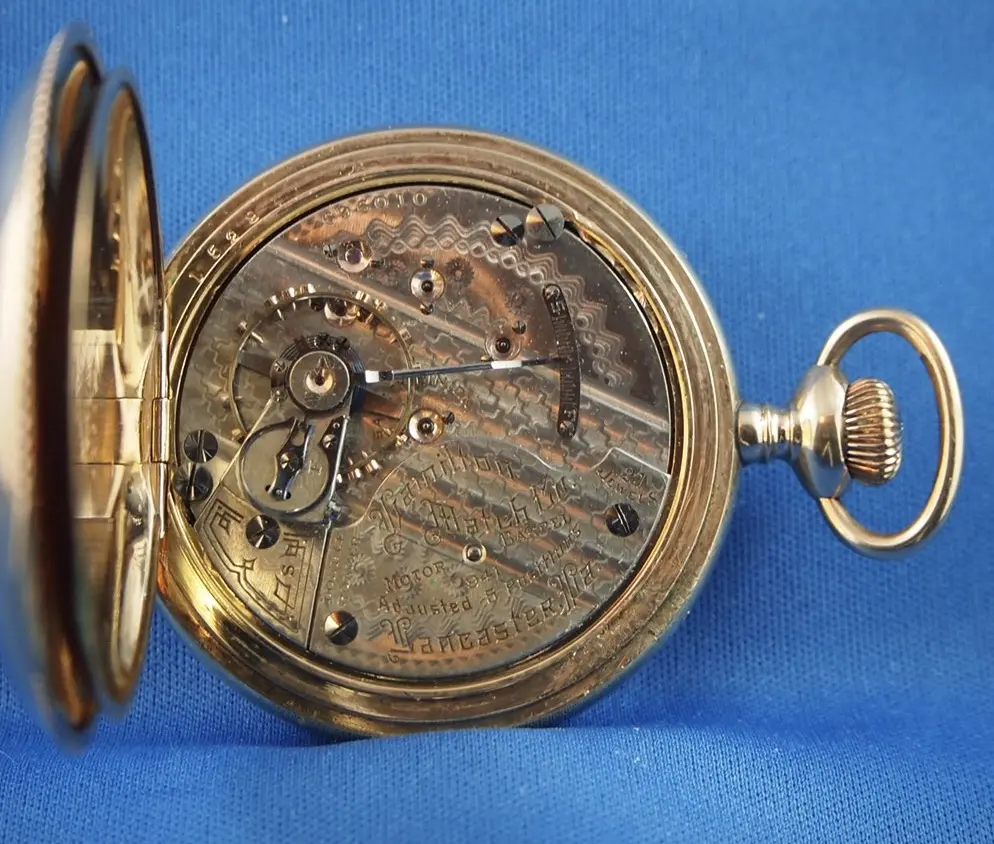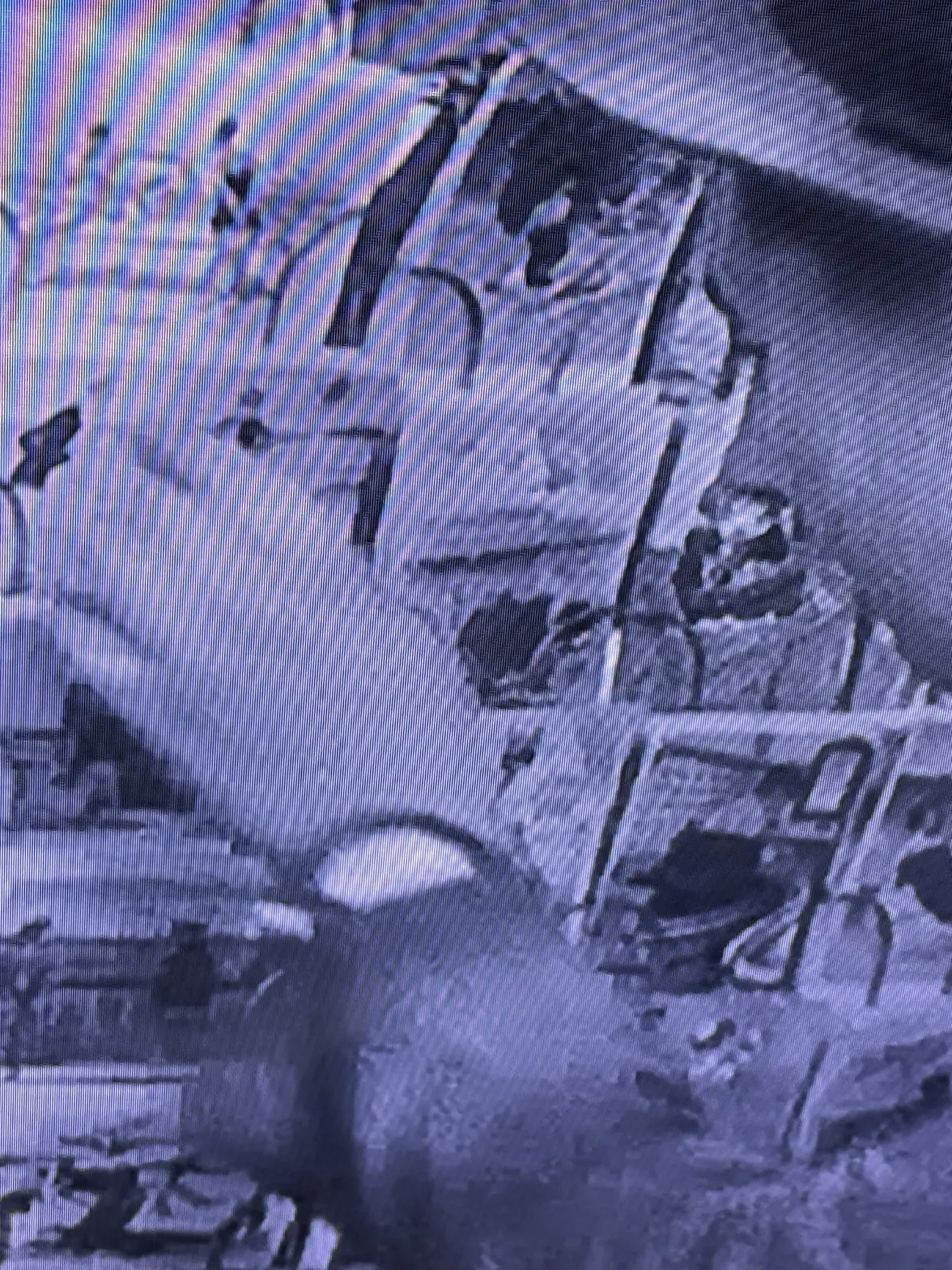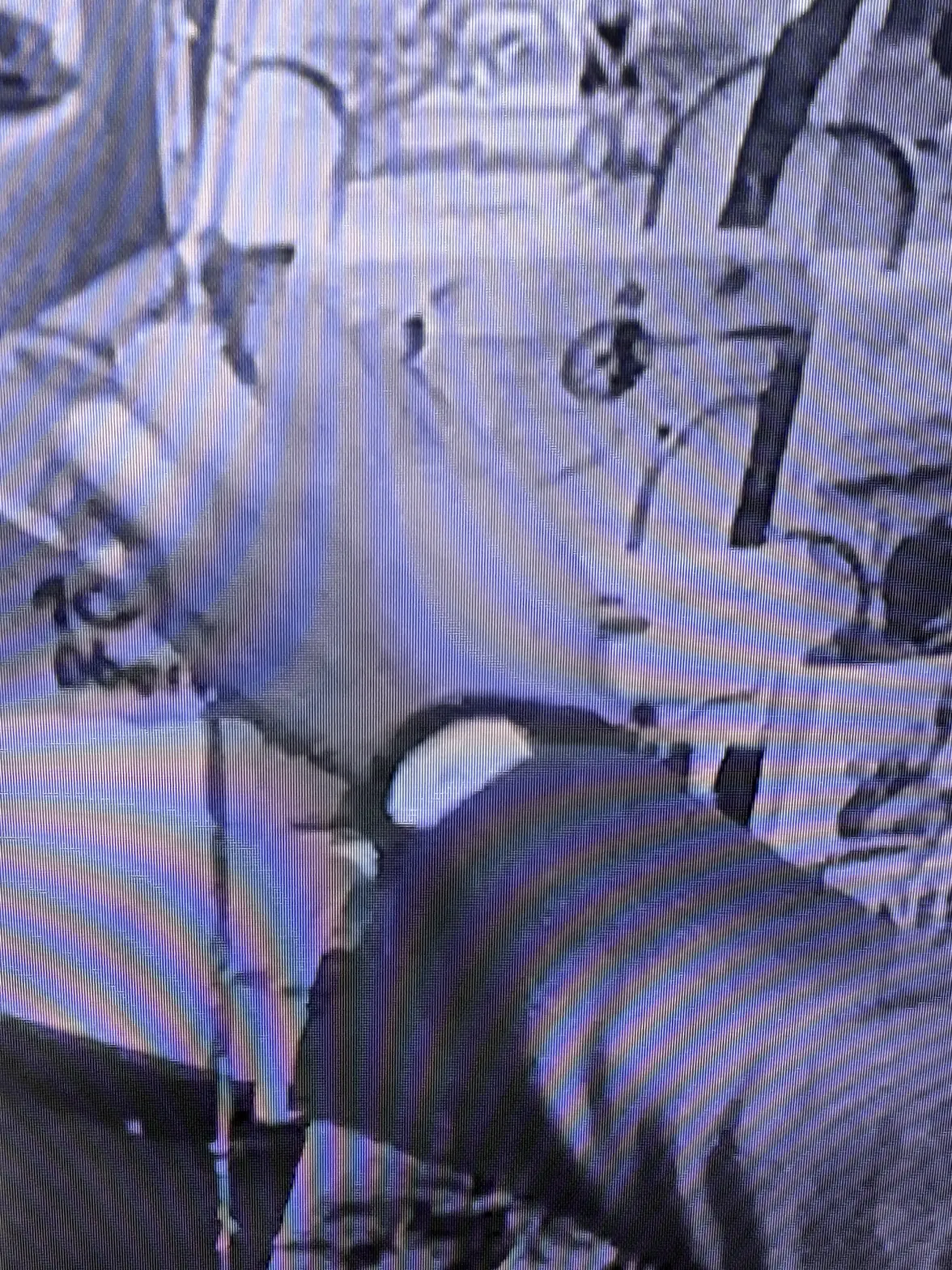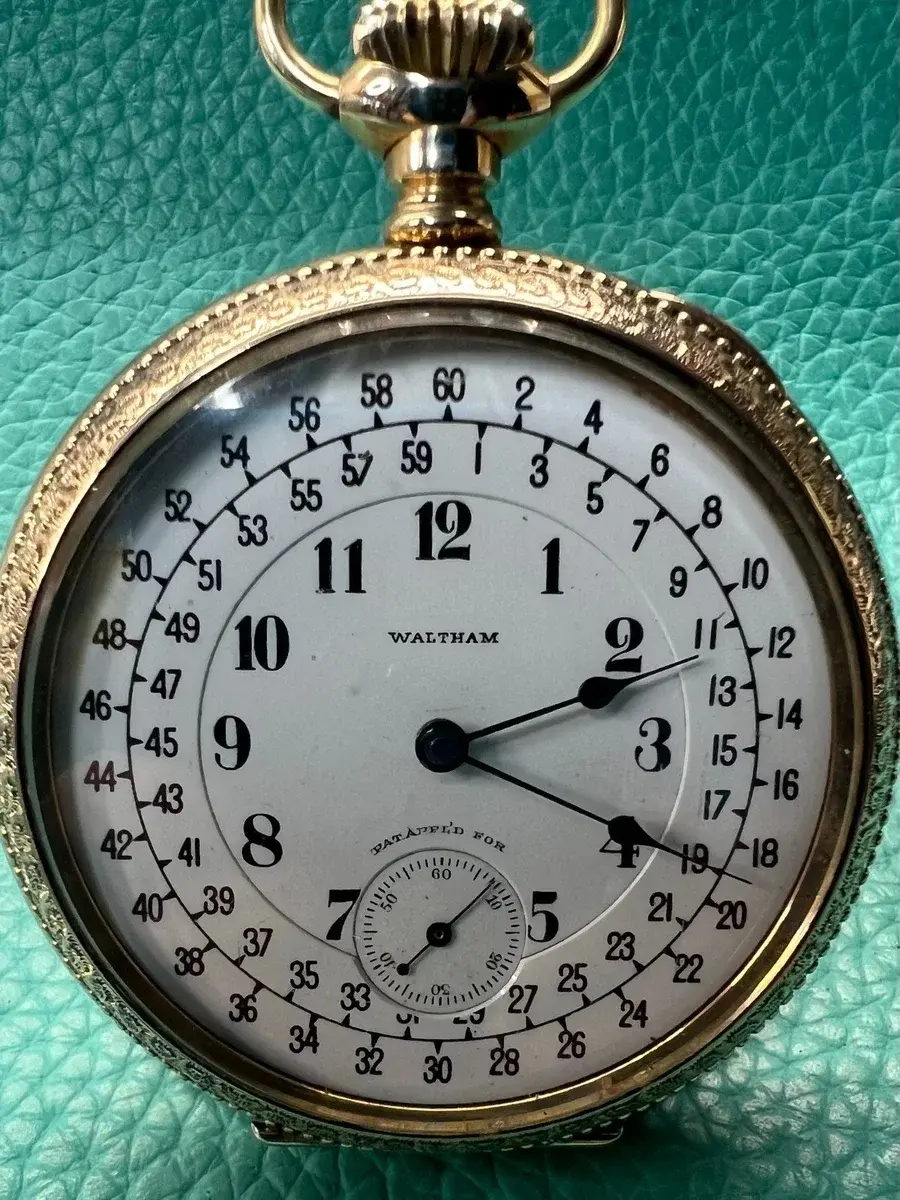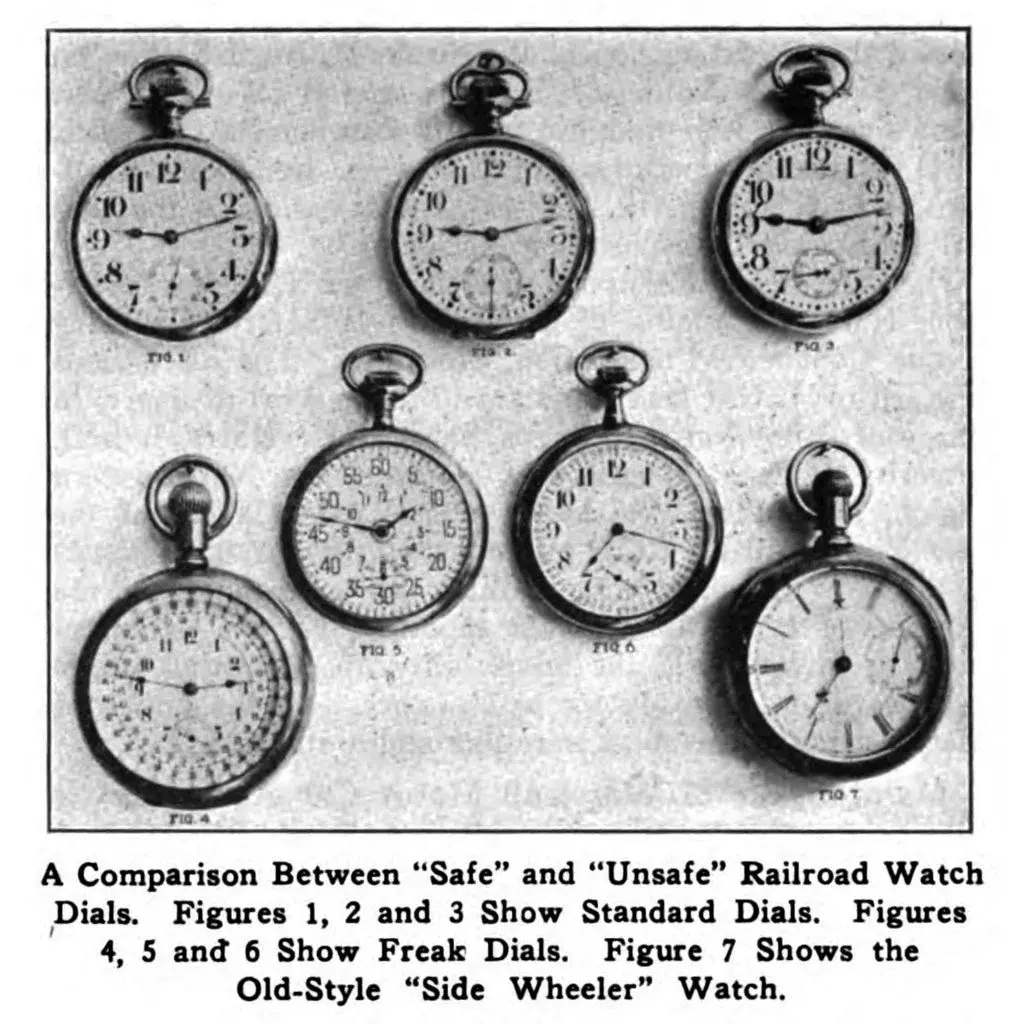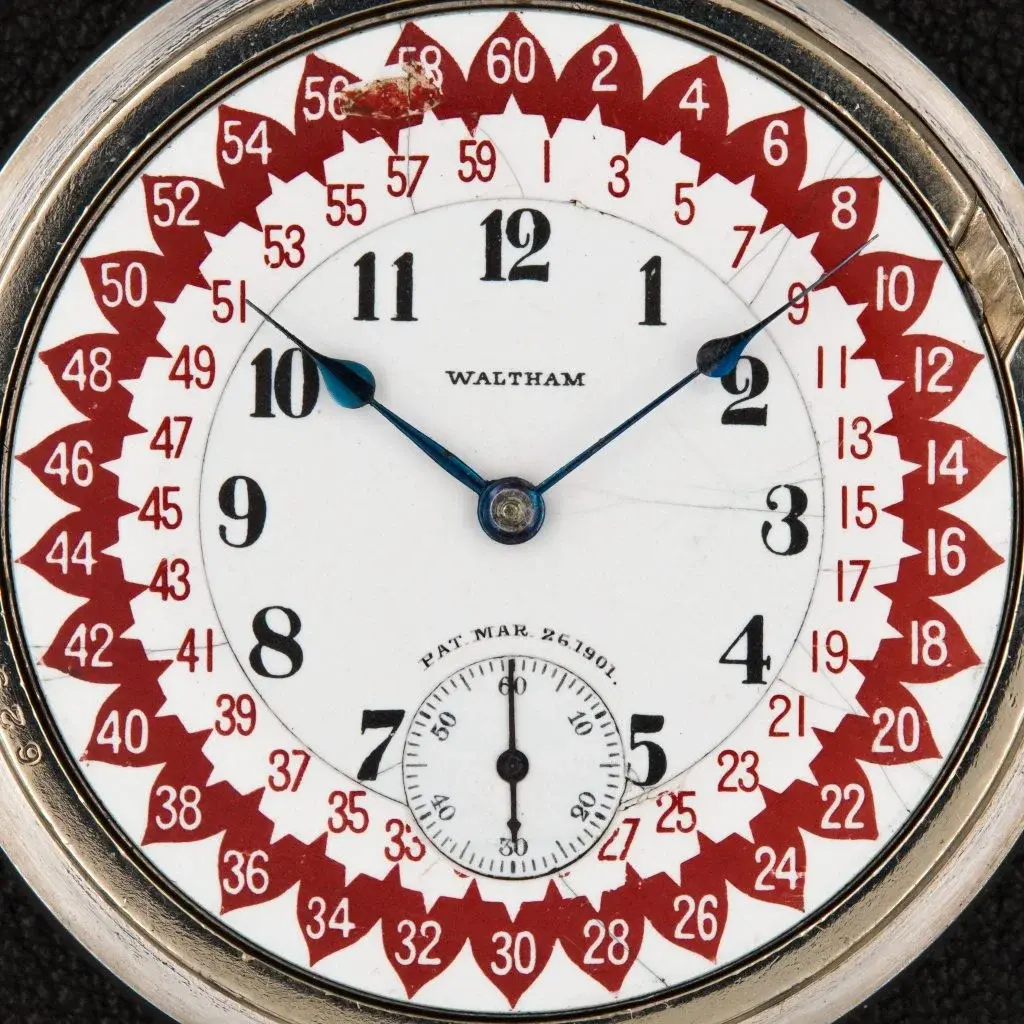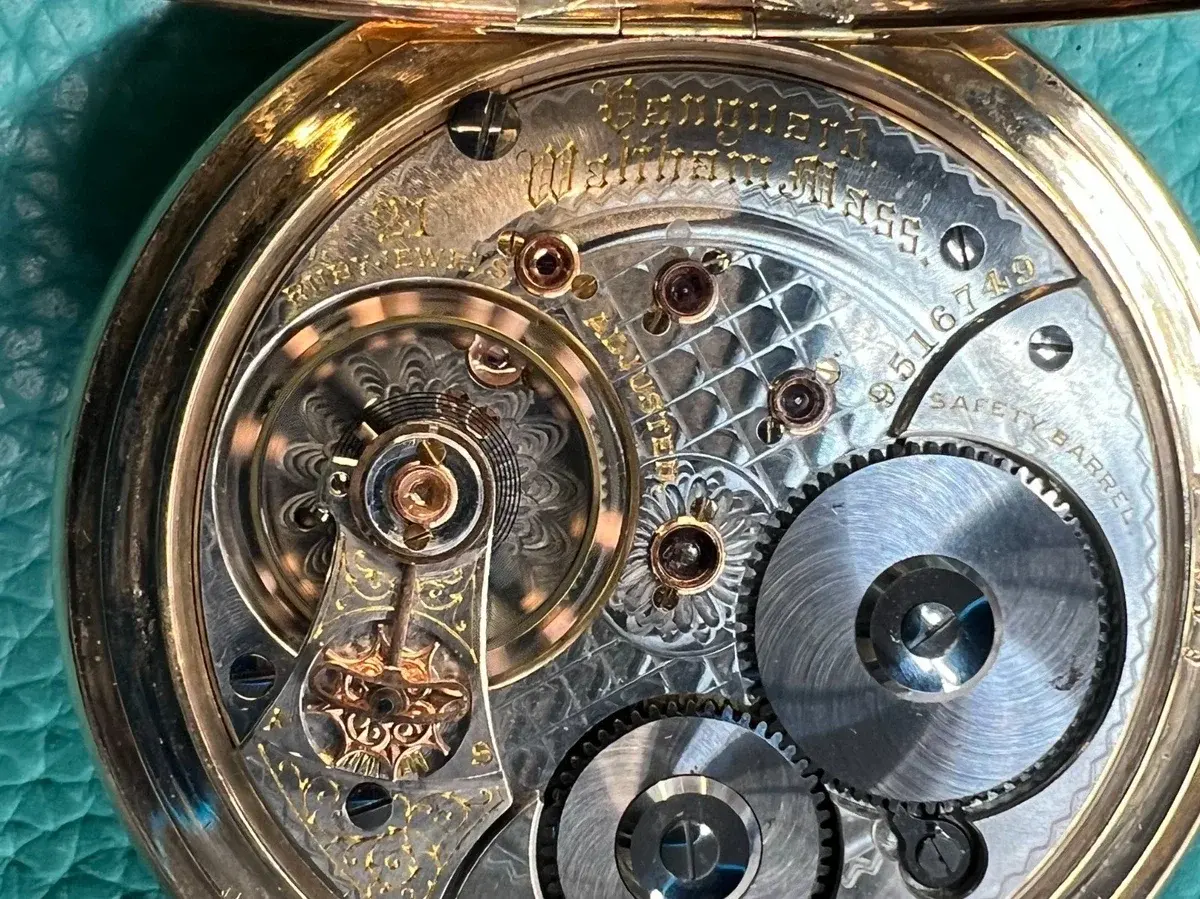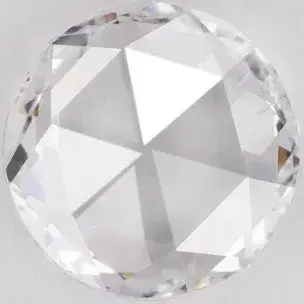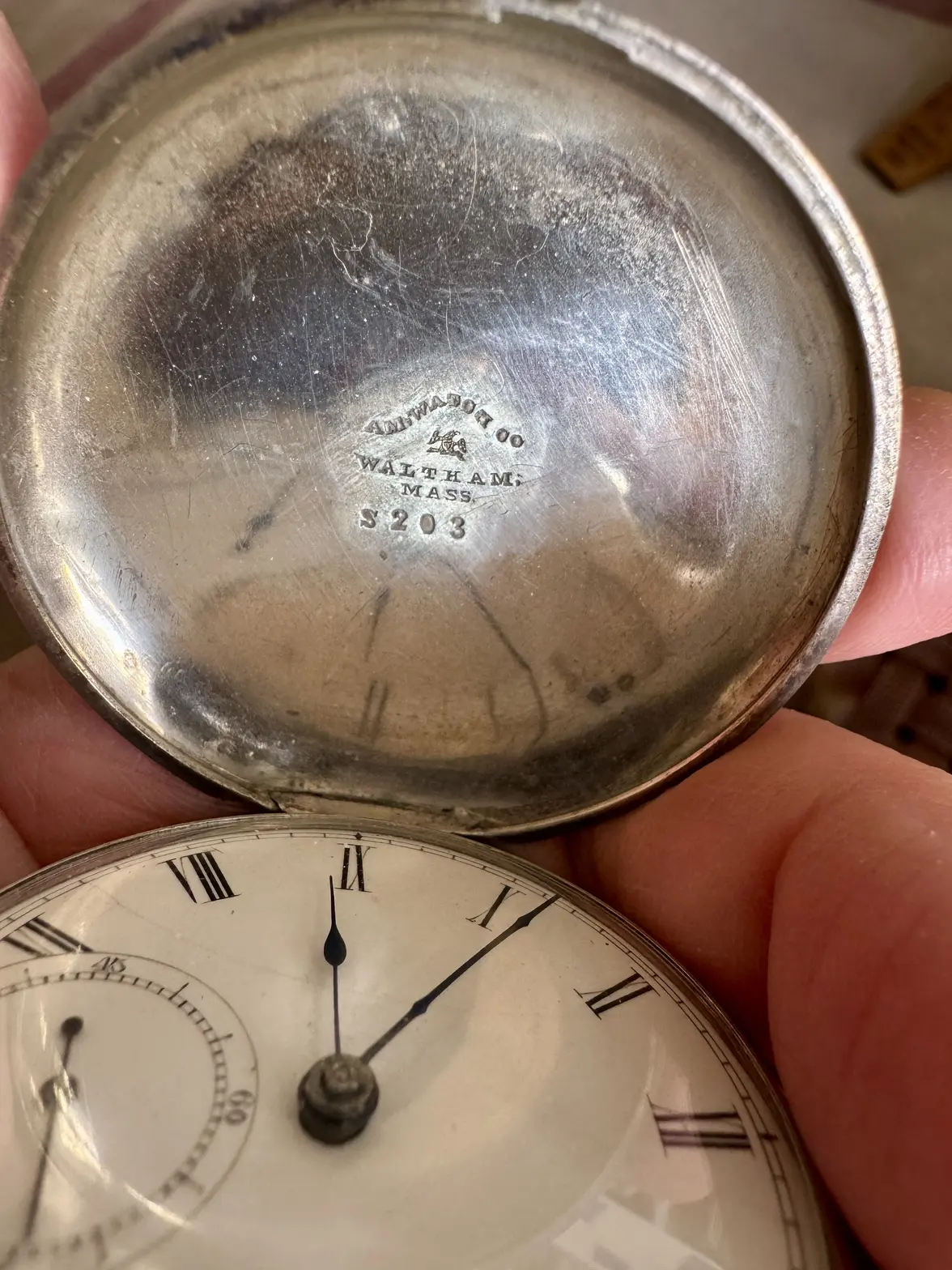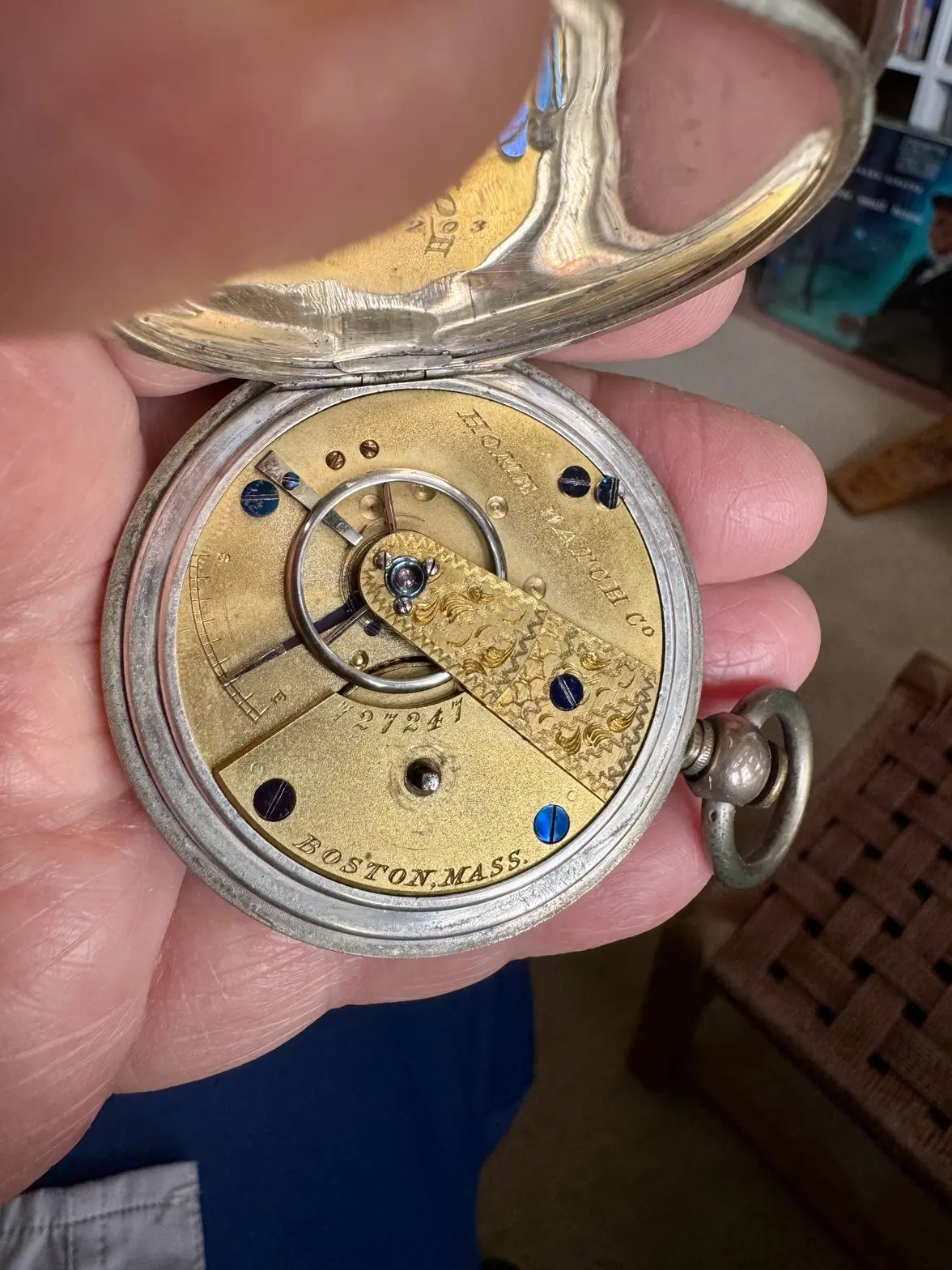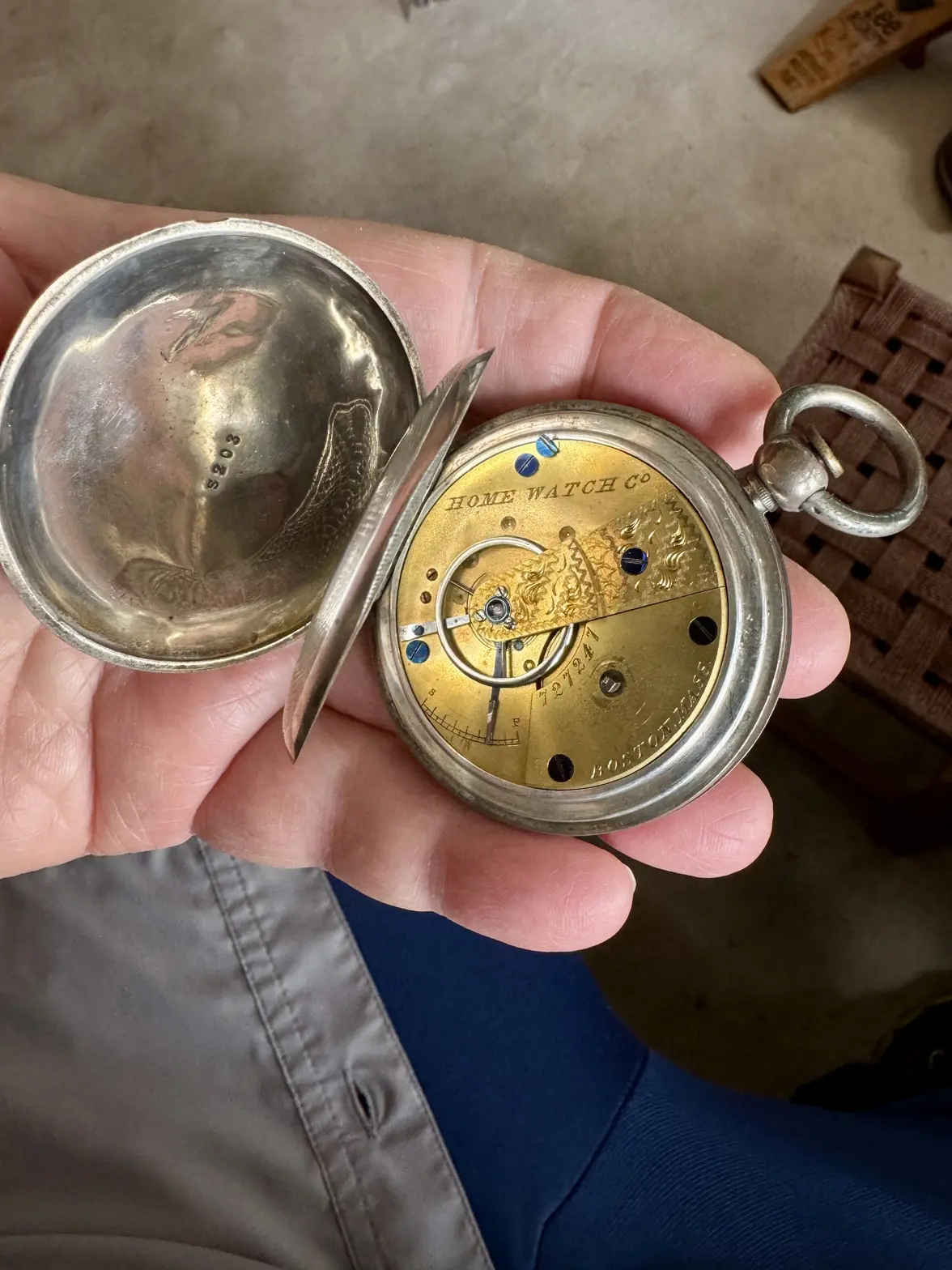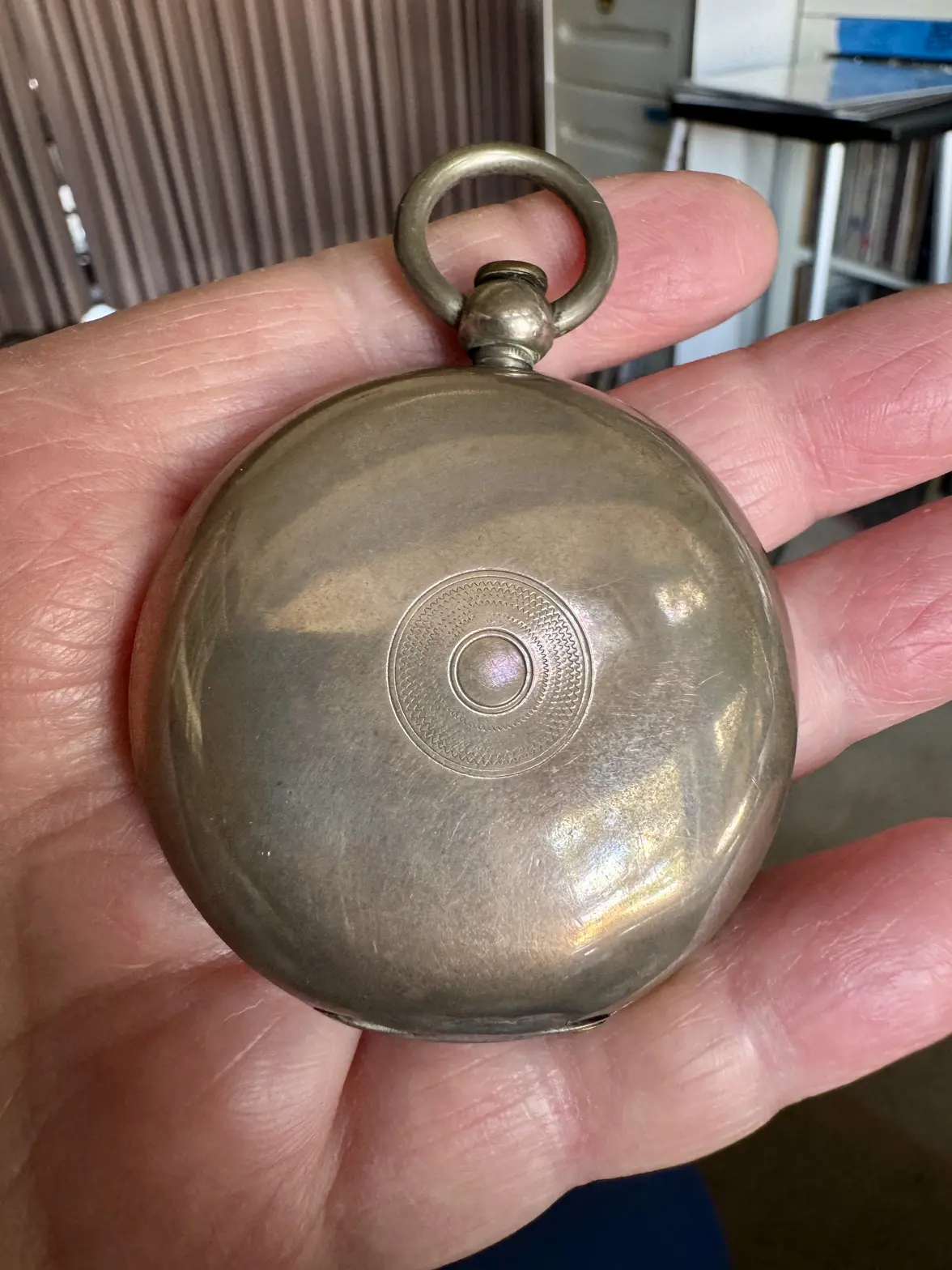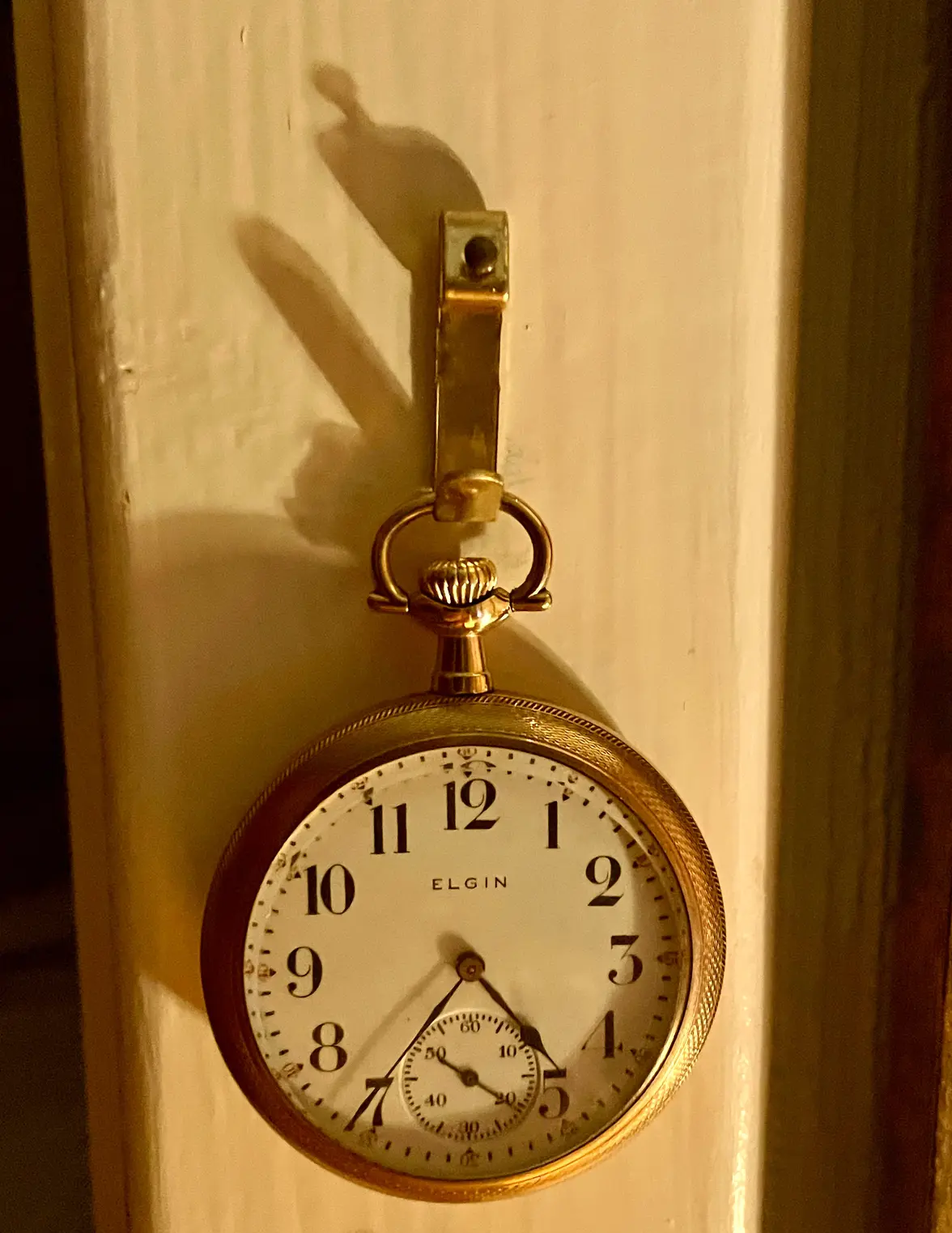Calling all Pocket Watch Buffs
Canuck
·This one again! My 1892 CPR Waltham, 18-size railroad pocket watch. Set to the second 25 days ago, and hasn’t stopped since. Re-set minutes and hours only to MST at the time change, but seconds not disturbed. After the first 7 days, it had gained 20 seconds, but not re-set. Still 20 seconds fast after 14 days, so no change in the rate. Same goes after 21 days, no variation. On the 22 day, I forgot to wind it. On last Friday morning (the 23 day), I remembered to wind it. It hadn’t stopped but was 7 seconds slow. Today (the 25th day), still seven seconds slow! It is 108 years old and continues to amaze me! Freshly serviced and new mainspring in mid October.
TexOmega
·Canuck
·Canuck
·This one again! My 1892 CPR Waltham, 18-size railroad pocket watch. Set to the second 25 days ago, and hasn’t stopped since. Re-set minutes and hours only to MST at the time change, but seconds not disturbed. After the first 7 days, it had gained 20 seconds, but not re-set. Still 20 seconds fast after 14 days, so no change in the rate. Same goes after 21 days, no variation. On the 22 day, I forgot to wind it. On last Friday morning (the 23 day), I remembered to wind it. It hadn’t stopped but was 7 seconds slow. Today (the 25th day), still seven seconds slow! It is 108 years old and continues to amaze me! Freshly serviced and new mainspring in mid October.
TexOmega
·The pocketwatchdatabasebase site calls this regulator a “Ball” regulator. Not the same as the Goldthwait regulator used on the grade 936, 940, all the way to grade 946. Seems it was added to the base Hamilton movement that was modified when the movement got to the Ball Watch Co. in Cleveland. Try as I may, I am unable to translate the lettering on the bezel of that display case. Indeed, a movement worthy of being shown in a display case.
TexOmega
·Waltesefalcon
·Hamilton grade 927 circa 1904 in display case.
With the gold pkg😎
L. E. Miner Foley, Minnesota on the dial.
How many LPs do you own?
Canuck
·My 927 is homely by comparison. It is in nice shape, but it lacks the gold highlights.
TexOmega
·Canuck
·I’ve shown this one here, before. The movement is a grade 941 which is the hunter cased version of the venerable and popular grade 940.
https://pocketwatchdatabase.com/search/result/hamilton/696010
This one has everything that the very popular grade 940 has, but the 940 was railroad approved. The 941 was not railroad approved as it was in a hunter case. Compared to the grade 940, the 941 was scarce (not rare).
https://pocketwatchdatabase.com/search/result/hamilton/696010
This one has everything that the very popular grade 940 has, but the 940 was railroad approved. The 941 was not railroad approved as it was in a hunter case. Compared to the grade 940, the 941 was scarce (not rare).
gilb12
·Good morning!
Today I wanted to tell you briefly about a watch that just slipped out of my hands (I can't win all the auctions... And thank goodness 🤣🤣🤣)
It is a Waltham Vanguard grade 1892 Size 18 from 1900 with a RARE dial by Ezra C. Fish, also known as "Staggered marginal minute dial".
The curiosity is that despite the writing "Pat. Appl'd For", this dial did not obtain the patent, as it was considered "unsafe", that is, it did not allow a quick and immediate reading of the time (according to the canons of the legendary Webb C. Ball), following photo (fig 4):
Patent that this other dial by Ezra Fish instead obtained.
The rarity comes from the fact that this dial was only made for a few years for Waltham and then became discontinued... So considering that 125 years have passed... Finding one in good condition and working is quite rare...
As for the 1892 model... Well there's little to say... Damascus platinum, gold settings, church regulator.... The usual "American Masterpiece" 😍😍😍😍😍
Maybe sometime we'll delve deeper into the character of Ezra Fitch.... Maybe, with a watch in hand 😂
Greetings!!
Today I wanted to tell you briefly about a watch that just slipped out of my hands (I can't win all the auctions... And thank goodness 🤣🤣🤣)
It is a Waltham Vanguard grade 1892 Size 18 from 1900 with a RARE dial by Ezra C. Fish, also known as "Staggered marginal minute dial".
The curiosity is that despite the writing "Pat. Appl'd For", this dial did not obtain the patent, as it was considered "unsafe", that is, it did not allow a quick and immediate reading of the time (according to the canons of the legendary Webb C. Ball), following photo (fig 4):
Patent that this other dial by Ezra Fish instead obtained.
The rarity comes from the fact that this dial was only made for a few years for Waltham and then became discontinued... So considering that 125 years have passed... Finding one in good condition and working is quite rare...
As for the 1892 model... Well there's little to say... Damascus platinum, gold settings, church regulator.... The usual "American Masterpiece" 😍😍😍😍😍
Maybe sometime we'll delve deeper into the character of Ezra Fitch.... Maybe, with a watch in hand 😂
Greetings!!
Canuck
·Excellent content for what amounts to a favourite thread on the Omega Message board! Pocket watches really are a most interesting collectible. It is not my intention to scoop @gilb12 ‘s excellent post, but Fitch was an interesting person. This link leads to a site which is all about Fitch.
https://awco.org/present/ECFitch.pdf
https://awco.org/present/ECFitch.pdf
Canuck
·Good morning!
Today I wanted to tell you briefly about a watch that just slipped out of my hands (I can't win all the auctions... And thank goodness 🤣🤣🤣)
It is a Waltham Vanguard grade 1892 Size 18 from 1900 with a RARE dial by Ezra C. Fish, also known as "Staggered marginal minute dial".
The curiosity is that despite the writing "Pat. Appl'd For", this dial did not obtain the patent, as it was considered "unsafe", that is, it did not allow a quick and immediate reading of the time (according to the canons of the legendary Webb C. Ball), following photo (fig 4):
Patent that this other dial by Ezra Fish instead obtained.
The rarity comes from the fact that this dial was only made for a few years for Waltham and then became discontinued... So considering that 125 years have passed... Finding one in good condition and working is quite rare...
As for the 1892 model... Well there's little to say... Damascus platinum, gold settings, church regulator.... The usual "American Masterpiece" 😍😍😍😍😍
Maybe sometime we'll delve deeper into the character of Ezra Fitch.... Maybe, with a watch in hand 😂
Greetings!!
gilb12
·I think I detect a diamond end stone on the top pivot of the balance staff on the handsome Waltham 1892 model shown in @gilb12 ‘s post. If it is diamond (some have them, some don’t), then there will be a diamond end stone on the bottom pivot of the balance staff, as well. If memory serves me correctly, I only recall having seen diamond end stones on Walthams. I have a 16-size Waltham Vanguard 23-jewel model with diamond end stones. I have a Hamilton model 21 marine chronometer which uses a diamond end stone on the weight bearing end of the balance staff. On these, there is only one diamond end stone.
Wait 😲...
Some Watchmakers told me that they were just "White" corundum?!
Are they actual Diamonds??😱
Canuck
·Sapphire gems and ruby gems are both of the corundum family. Why would a manufacturer choose to use colourless corundum rather than ruby? A close look at the colourless stone might reveal the upper surface of the stone is facetted, as in a rose cut diamond. See image. Rose cut diamonds are polished flat on the under side, but faceted on top as in a geodesic dome. If you feel it might be colourless corundum, go with it!
gilb12
·Sapphire gems and ruby gems are both of the corundum family. Why would a manufacturer choose to use colourless corundum rather than ruby? A close look at the colourless stone might reveal the upper surface of the stone is facetted, as in a rose cut diamond. See image. Rose cut diamonds are polished flat on the under side, but faceted on top as in a geodesic dome. If you feel it might be colourless corundum, go with it!
Very interesting. Thanks Doug. I don't Remember why indeed 😏😏... Longines many times used colourless Ruby... But I don't really Remember why 🤔
Indeed Looking Better at the Waltham that I posted , seems more a diamond than a Ruby, considering the faceted surface.
Thanks again 👍👍🙏
